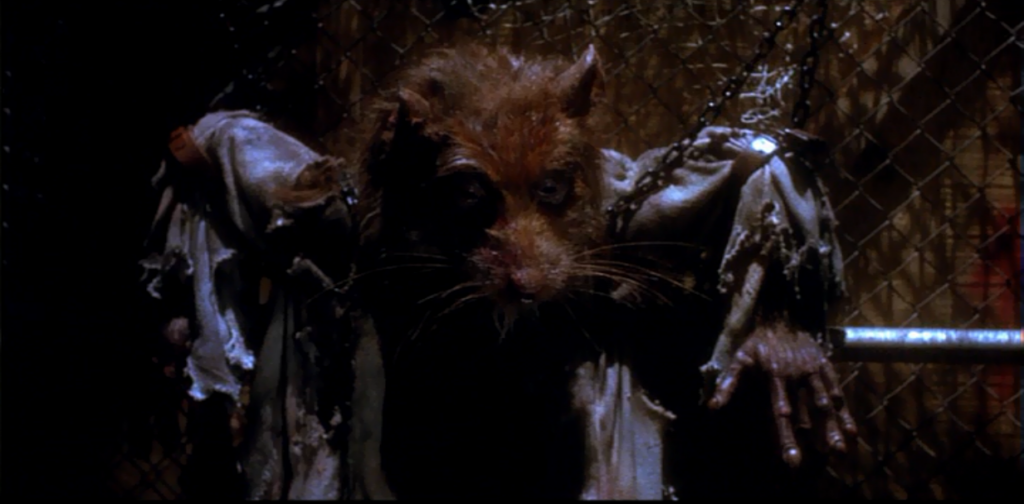
How To Write A Good Climax In Your Screenplay
So you thought the difficult part was done? You’ve pushed through the middle of your script after countless hours of laboring over it. Now, you’re going to write the climax. The simple part. Your main character only has to take on the bad guy, but do you know how to write a good climax in your screenplay?
A climax is the most intense, exciting, or important point of your screenplay. When you started your screenplay, you had an idea of what would happen in your story. You can easily picture it in your mind.
The main character would overwhelm the antagonist; several helicopters would have involvement in some capacity.
Your hero would profess his love for the heroine on at her doorstep. You should be able to write this part of your script quickly. You’re anxious to complete this script and get it out to the marketplace to start your career and get paid for it.
If you force a subpar climax into your screenplay, it could hurt you in the long run.
Act Three Deserves As Much Attention As The Other Acts

The ending has an additional problem to solve that the other acts don’t. The end is the final experience the audience has with your script. It’ll be the lasting memory in the audience’s mind that stands out. As a result of this, these lasting impressions are what they use to make a final evaluation of your script.
If the climax sucks, it won’t matter how great the first two acts are. Audience approval will vanish as they suffer through the horrible finale that ensues.
This is why it’s imperative that you understand how to write a script with a great conclusion with thrills that delight the audience.
This is at the point where the Roger Federer and Rafael Nadal rivalry comes into play.
There was a five-set 2008 Wimbledon showdown between these two men.
This match was exhilarating for two very important reasons:
- They were both at their peak in their career.
- Both were equal in skill level.
To emphasize the point of this comparison, I’ll give numerical values for each player’s peak with 1 being the lowest and 10 the highest.
This match catch anybody’s attention if one player was a 3 and the other a 9. Had it been like that, the level 3 player would have gotten waxed by the other player and it wouldn’t have been anything to write home about.
If both players were level 6, it would have been exciting as opposed to when their peaks differed. With that said, a match between players at level 6 isn’t as exciting as both players competing at their peak.
What A Climax Needs To Be Exciting And Entertaining
Like the previous example, your main character need to be evenly matched against the villain.
If the main character is too overpowering, then he’ll defeat the villain quickly. The climactic encounter will end before it has a chance to start.
If your main character is weak, it won’t be believable for him to beat the villain. In both scenarios, the climax will be anticlimactic and the results will be ugly. You’re not likely to sell you spec to a studio.
To stop these disastrous results from occurring, make sure the villain is a worthy opponent for the main character and vice versa.
Be sure not to prioritize one character over the other. They should both be smart, determined and resourceful.
They should be so evenly matched that the only reason the audience believes the main character pulls through is because most main characters in past movies have.
If it wasn’t for that statistic, the outcome of the climax would be in doubt just like the 2008 Gentlemen’s Wimbledon Championships. That’s how a climax that has tension and suspense is made and that’s how you keep audiences on the engaged.
So, how do you succeed at writing a climax?
How do you keep your main character and villain evenly matched?
Before or in the middle of the climax of your script, you could:
- handicap the main character by taking away their mentor
- handicap the main character by taking away their peers
- secure the main character through illusory peers
Take a look at this…
Handicap The Main Character By Taking Away Their Mentor

The main character having the guidance of a mentor can make him too strong causing the flaws that were mentioned earlier. If the mentor gets involved in the climax, since they’re so strong, the outcome of the climax will be too predictable and be completely boring.
But if the mentor doesn’t get involved, his absence will cause believability issues. If he’s around, why didn’t help out the main character in the big fight?
The answer is to strategically take out the mentor from the picture before the climax, so there’s a reason why they can’t be there.
Therefore, the main character’s doesn’t have a good chance of success, which puts their victory in question, making for a more exhilarating conclusion.
You don’t have to kill the mentor. Their removal can be effective even if it’s only for a short time.
Take the 1990 Teenage Mutant Ninja Turtles film. The turtles’ mentor, Splinter. Splinter had learned his martial arts from Shredder’s adversary, Hamato Yoshi. Splinter is capable of vanquishing Shredder, so as long as he’s around, success is guaranteed.
Hence, to make this plot point more exciting, the film tries hard to omit Splinter until the pivotal scene in the end, enabling the turtles to fight Shredder mano a mano.
Look at the X-Men franchise for more examples. In the first three films, Professor Xavier is incapable of using his powers to help out in the climax.
He’s poisoned in the first film. He’s taken captive and is under mind control. He’s killed in the third film, which is an outcome that makes the climax that much more exciting and also a compelling act two.
Handicap The Main Character By Taking Away His Peers
Peers?
Who are theses people?
Linda Seger explains in Making a Good Script Great, peers are supporting characters that “provide mass and weight to demonstrate the prestige, power, or stature of the protagonist or antagonist.”
Think of:
- henchmen
- freelance mercenaries
- bodyguards
- personal assistants
- crime techs
The peers return at the climax of the script, to hurt the villain and thus, give the main character a chance at success. Through this, you can divest the villain of the peers who, heretofore, reinforced the power of the villain.
In an action movie, this usually means the good guys killing off the villain’s goons before, or in the middle of, the climax. You could also make the henchmen:
- disband to make the villain’s escape
- betray the villain because they hate his leadership
- check a problem manufactured by the main character
Another alternative is to have the villain kill his own henchmen. Even though loses his peers, making him susceptible to the main character, this emphasizes the antagonist’s ruthlessness, this action reinforces his might.
Taking the antagonist’s goons out of the way is simple. Removing your antagonist’s peers will require creative means when they’re not a villain per se.
Look at the ending of 9 TO 5. Even though they took their enemy, Franklin Hart, captive, the administrative assistant, Roz, who is fiercely loyal, poses a threat. She can ruin the heroines’ ruse because she’s his “eyes, ears, and nose”, making victory inevitable for Hart.
Therefore, in order to handicap him, the heroines have to get rid of her.
They fake a memo asking her to travel to France to take part in a long language immersion course. Brimming with joy, Roz heads to Europe. Also brimming with joy by the heroines’ ingenuity, audiences eagerly anticipate to see what happens next.
This example highlights a point:
While peers reinforce an antagonist’s power, ironically, they all also shine a light on their vulnerability which can be used to defeat the antagonist.
This truth might help you keep the balance of power between your main character and villain at the climax of your screenplay or novel.
Secure The Main Character Through Illusory Peers
Make your main character strong by bolstering their power through illusory peers: people that make your main character look more powerful. These people however, don’t augment the protagonist’s position.
Think back to that scene from ERIN BROCKOVICH, when a trio of PG&E’s lawyers, infiltrate Ed’s law offices.
In order to appear equally menacing, Ed increases his roster from a duo into a quartet. Throwing staffers into the conference room, he then gets people to think they’re lawyers working at his firm.
Summing Up How To Write Climaxes
Now that you have a firm grasp of what goes into a climax, it’s time for you to rewrite your own script and see how it can be fixed. You have to be a screenwriter that studios can depend on to deliver a great ending. Distributing the power between the main character and the villain in the climax is a good first step.
Now get writing!
Leave A Comment
As you know, this site is dedicated to helping screenwriters. To help out our fellow screenwriters, leave a comment to make the content easier to find.
Related:
- 11 Of The Best Places To Write A Script In LA
- Are You Looking For Screenplay Ideas?
- How To Write A Screenplay That Doesn’t Fall Apart In The Second Act
- Top 5 Best Screenplay Coverage Services
- How To Write A Scene In A Screenplay
- How To Improve Your Script
- Mistakes You Shouldn’t Make While Writing A Screenplay
- How To Write A TV Pilot
- Should You Write What You Know?
- What Screenwriters Can Learn From Final Fantasy Characters For Their Fantasy Script
- 13 Reasons Why The Screenwriting Subreddit Is A Cesspool
- 5 Ways To Come Up With Original Movie Ideas
- 6 Tips To Write A Killer Logline
- How To Make Your Screenplay Valuable
- How To Write An Action Scene